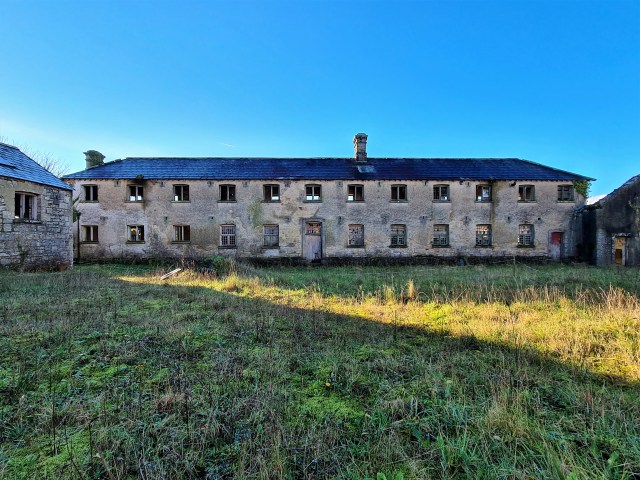
The background to the appearance of workhouses around Ireland in the 19th century has been discussed here before (see Silent Witness « The Irish Aesthete). In total, 163 such institutions were constructed, one of them on a six-acre site to the immediate south of Tipperary town. Overseen by a Board of Guardians, in November 1839 a Poor Law Union had been established in this part of the country and the workhouse soon followed; built of limestone in a loosely Tudorbethan manner and at a cost of £6,240 plus a further £1,110 for fixtures and fittings, it received the first occupants in July 1841. As was the case with all other such properties, this one was designed by the Poor Laws Commissioners’ architect George Wilkinson and intended to provide places for 700 persons. Inevitably, with the advent of the Great Famine in 1845, that figure was greatly exceeded; by the end of the famine period, there were four times as many occupants, this severe overcrowding leading to many deaths from diseases such as typhus. A graveyard was opened in August 1847 to provide burial sites for those who had died in the workhouse. Subsequently additions were made to the site, with a long, two-storey wing running behind the austere three-storey entrance/admissions block, the former concluding in a chapel, constructed in 1871.




By the start of the present century, much of the former workhouse in Tipperary had fallen into disrepair, although part of it had been converted into commercial premises (and this remains the case today). In 2000, the Tipperary hostel project, a community-based project, embarked on the transformation of the building into self-catering accommodation for tourists. The project successfully secured support and finance from a number of agencies, most notably FÁS, a state-funded training agency intended to encourage employment. Upon completion, the facility was expected to operate primarily as a local community-based hostel under community and voluntary management. The income generated from this enterprise was expected to finance further educational and training work in the fields of traditional trades and crafts, not least by hosting residential workshops. However, while the project was supposed to be completed in four or five years, in 2010 it transpired that while almost €4 million had been provided in state funding, the job remained unfinished and further finance had been suspended. Three years later, in December 2013, the Irish Independent reported that a police investigation had been launched into ‘how a derelict pre-famine workhouse, which was to be refurbished into a modern hostel in a Fas-run project, remains rundown despite almost €5m of public funds being spent on the project’, with only room on the site completed. Furthermore, ‘several of the 23 workers who were supposed to be working on the site of the former workhouse ended up working in 62 other locations, including local GAA and tennis clubs as well as community halls and other local amenities. Twenty private dwellings were also renovated.’ Work on the project had already been halted and was not resumed.




Following this debacle, responsibility for the Tipperary workhouse passed to the local authority, which appears to have done nothing to ensure the building’s future or to secure it against incursion: in March 2018 the site suffered a bad arson attack which left large sections of the roof exposed to the elements, but no repairs were undertaken, leading to further deterioration. Meanwhile, most of the windows were broken and also left unrepaired. Then in February 2019 it emerged that the county council was attempting to sell the workhouse, although it seems there were no offers made for the place, or at least none sufficiently satisfactory for the place to change hands. Instead, it was left to fall into the present condition. This is how the workhouse now looks, abandoned and neglected, with little evidence that just over 20 years ago the plan was that it would become an important tourist asset for Tipperary, bringing visitors to the area, providing employment for residents, improving the local economy. Instead, it has become another broken-down building, an eyesore instead of an asset. This isn’t an unusual story in Ireland. Indeed, there’s hardly a town around the country that doesn’t have a substantial property, too often owned by either a national or local authority, or a state body, which has enormous potential but has been allowed to fall into a ruinous condition. Once again, this is how we choose to treat our architectural heritage.
















